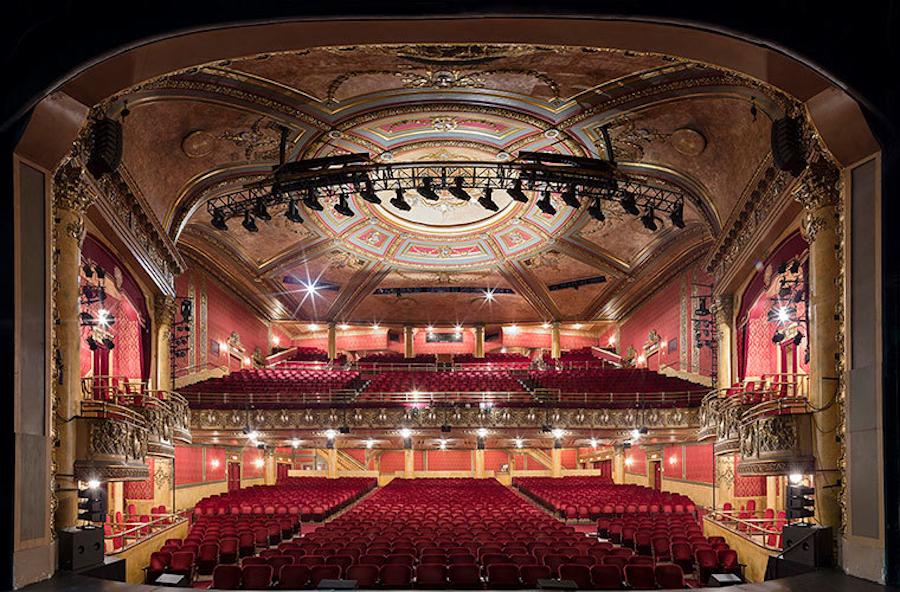Elgin Theatre Information

Elgin and Winter Garden Theatres were originally designed to be the flagship for a theatre chain owned by Marcus Loew in 1913. He had hired Thomas W. Lamb to design the building, trusting his expertise after the work he did in designing Ed Mirvish Theatre. The goal was to use the Edwardian double-decker style to offer a place where vaudeville acts and silent cinema could be enjoyed. The theatres were intended to suit different classes of patrons, with the Winter Garden upper theatre designed for the most exclusive vaudeville, acts with premium prices for reserved seating, and the lower garden designed for less restrictive entertainment that middle and lower class patrons could enjoy.
The lower theatre was built with a gold and marble dome that was pleasing to the eye and easier to maintain, while the upper theatre had plant murals, garden trellises, tree trunk columns, lantern lights and other features that gave it a magical appearance and feel. This decision to separate the two clientele also allowed the upper theatre to welcome more experimental and avant-garde acts without requiring the closure of the lower theatre while also reducing competition for acts and performances.
Just over ten years later, in 1928 as full-length silent films became more popular and sound films grew more prominent and elaborate, the lower theatre was converted to show sound films requiring the closure of the upper theatre. The Winter Garden Theatre remained closed for the next 60 years, with all the vaudeville flats and scenery still contained within. This collection of theatrical artifacts gave the theatre the distinction of holding the world’s largest surviving collection of props and accessories of the vaudeville age.
As time passed, the warm reception of the lower theatre spread, which gave Famous Players the incentive to arrange a deal with Marcus Loew to purchase the theatres in 1969. The Famous Players used the Elgin theatre primarily to show B movies and soft-core entertainment. But as you can guess, this wasn’t the end for these gorgeous theaters.
The Ontario Heritage Foundation saw potential in the theatre to offer more than low-brow movie experiences and purchased the theatres from Famous Players in 1981. Many questioned the move, wondering if Elgin Theatre could prove its value to Ontario until they hit their big break four short years later. In 1985, the musical Cats was presented at Elgin Theatre with an incredible two year run from 1985 to 1987. The musical’s success demonstrated that the Elgin Theatre was still an important and economically viable venue. The success of the theatre nudged the new owners to close the building in 1987 for a full restoration that ended in 1989.
In 1991, Elgin Theatre later became the first installation of Dr. David Griesinger and Steve Barber’s LARES system, which was an electroacoustic enhancement system that would enrich the acoustics of the building to offer greater ambiance and intelligibility so that more seats in the audience could enjoy clearer sounds. Ever since then, Elgin Theatre has seen a marked rise in interest from major show producers including the world premiere of the Napoleon musical, the taping of four episodes of NBC’s Late Night with Conan O’Brien, as well as serving as one of the hosts for the annual Toronto International Film Festival.
It was clear that the idea of an Edwardian theatre had merit among fans, critics, and production companies making the Elgin theatres one of the most important theatre locations in the world.
See the below pages for further information on the Elgin Theatre:
Elgin Theatre Parking:
Read about parking options and rules at the Elgin Theatre.
Ticket Policies:
Read about the industry leading ticket guarantee and ticket authenticity policies when purchasing from tickets via this website.
Elgin Theatre Seating Chart:
View the Elgin Theatre seating chart and read information on the various seating options.